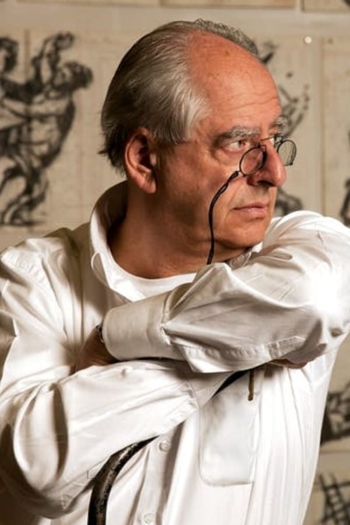
William Kentridge
2021More Sweetly Play the Dance
William Kentridge
The new work made by William Kentridge specially for EYE is a 45-metre-long frieze that depicts an endless parade of figures who collectively form a kaleidoscopic image of people on the move. These are pictures that hit us every day through the media, of people fleeing from hunger, war and sickness, which Kentridge sublimates into an impressive procession that evokes their sadness yet also conveys their vitality.
More Sweetly Play the Dance
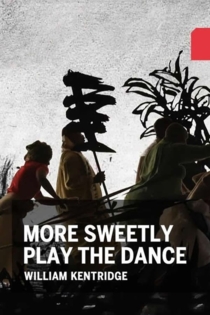
Wozzeck
William Kentridge, Tiziano Mancini
Matthias Goerne, John Daszak
A study of a man's physical and mental limitations. In the 24 quite harsh and grueling fragments of the unfinished drama, a body and a mind are tested as far as they can be pushed before their owner goes over the edge. Is there just one thing that proves to be too much for Franz Woyzeck, or is it an accumulation of miseries and torments of a wretched existence? Woyzeck is perhaps not so much a bleak account of how miserable life can be as how much strength is required to deal with the daily vicissitudes of life and how delicate and fragile a balance the human psyche rests on.
Wozzeck
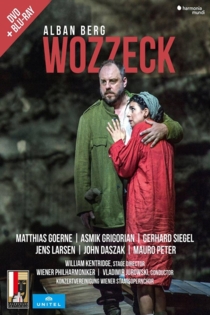
History of the Main Complaint
William Kentridge
History of the Main Complaint is the sixth film [of a] series and is based on twenty-one drawings. It was made shortly after the establishment in South Africa of the Truth and Reconciliation Commission, headed by Archbishop Desmond Tutu. It was set up to conduct a series of public hearings into abuses of human rights perpetrated during the apartheid era. The hearings, in which individuals told their stories of personal suffering, were held in order to make reparation for abuse and in the hope of creating reconciliation between peoples. The underlying theme of this film is a (self) recognition of white responsibility. This is played out through a 'medical' investigation into the body of Soho Eckstein, the white property-developing magnate and greedy-capitalist protagonist of most of the preceding films, which provides the starting point for a revelation of conscience. (tate.org.uk)
History of the Main Complaint
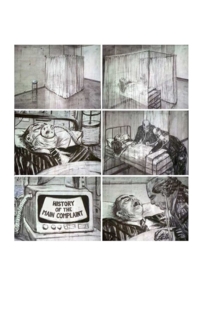
Sobriety, Obesity & Growing Old
William Kentridge
Sobriety, Obesity and Growing Old picks up the narrative and themes begun in Kentridge's first film, Johannesburg the Second Greatest City after Paris, and follows the development of the relationships between his cast of invented characters, Soho Eckstein, his wife and her lover, Felix Teitelbaum. These relationships reflect, metaphorically, the changing political situation in South Africa at the time the film was made. Demonstrations and marches in opposition to the apartheid régime together with the governmental relaxation of most of the State of Emergency regulations and restrictions heralded the beginning of a change in the country's power structure (and white attitudes towards black African rights). Soho, a symbol of South African white power, develops the capacity for awareness, longing and love and the potential for guilt and repentance.
Sobriety, Obesity & Growing Old

Felix in Exile
William Kentridge
Felix in Exile introduces a new character to the 'Drawings for Projection' series: Nandi, an African woman, who appears at the beginning of the film making drawings of the landscape. She observes the land with surveyor's instruments, watching African bodies, with bleeding wounds, which melt into the landscape. She is recording the evidence of violence and massacre that is part of South Africa's recent history. Felix Teitelbaum, who features in Kentridge's first and fourth films as the humane and loving alter-ego to the ruthless capitalist white South African psyche, appears here semi-naked and alone in a foreign hotel room, brooding over Nandi's drawings of the damaged African landscape, which cover his suitcase and walls. Kentridge has commented: 'Felix in Exile was made at the time just before the first general election in South Africa, and questioned the way in which the people who had died on the journey to this new dispensation would be remembered'.
Felix in Exile

10 Drawings for Projection, 1989-2011
William Kentridge
An outdoor performance and film screening that brings together all of the short animated films from internationally renowned South African artist William Kentridge's Soho Eckstein series.
10 Drawings for Projection, 1989-2011
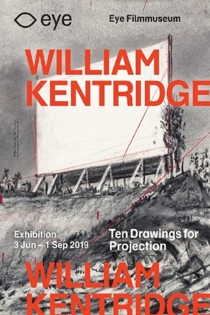
City Deep
William Kentridge
In City Deep, the “zama zama” miners and the landscape merge into artworks hanging in the Johannesburg Art Gallery, itself built during the heyday of gold mining in Johannesburg. Wandering the exhibition spaces is a deeply contemplative Soho Eckstein, gazing at the artworks and into vitrines. Towards the end of the film the gallery collapses in on itself, an imagined demise of an institution in a state of increasing dereliction.
City Deep
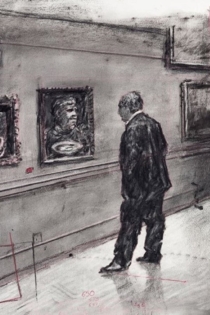
Other Faces
William Kentridge
Other Faces returns to the figure of Soho Eckstein, the industrialist and developer who is the key protagonist of the Drawings for Projection series. In this cycle of nine films created from 1989 through 2003, Kentridge addresses the doubling and contrary sides of the self, personified in the entrepreneur/capitalist Soho and his foil, the poet/ lover Felix. In this most recent work, pin-striped Soho Eckstein moves through a series of collisions of circumstances and recollection. In the film, the city of Johannesburg – inconstant, desperate, desiring, impenetrable – appears not so much as context as it does subject, in images of streets, facades, landscapes, and people. Familiar and recent attributes of the city appear, with one image not just suggesting another image but indicating a connection to displaced emotions and displaced histories. There are references to the street corner civil wars of daily life, and to the xenophobic violence of the last few years.
Other Faces
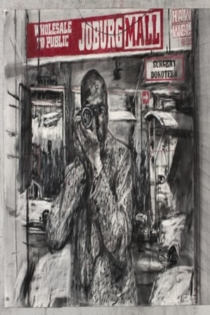
Tide Table
William Kentridge
The film sees a businessman (the Soho Eckstein figure from Kentridge's earlier films) standing on a hotel balcony watching the waves. Time passes, as the sea rolls back andforth in endless repetitions. We as viewers observed from his point of view. Then the scene shifts to a large drawing of a man, still in his business suit but now alternately sleeping and reading a newspaper at the water's edge in a deck chair. The drawing is folded into a series of images that provide a visual mediation on time's passage, on industry, on ildeness. Kentridge's work is often densely allusive, and here the film alludes to the Old Testament. The artist expressedly indicates that biblical accounts has informed his thinking. It is what he refers to as being 'over-determined' in that the motif arises from several distinct sets of meaning.
Tide Table
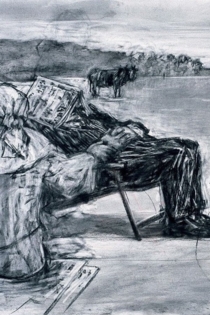
Weighing... and Wanting
William Kentridge
Drawing, literally, from the story of Daniel and Belshazzar, William Kentridge's film Weighing… and Wanting re-examines the legacy of Belshazzar's message in post-apartheid South Africa. While the political climate shared by Belshazzar's kingdom and apartheid-era South Africa is striking – in both, a ruling civilization relegates whole populations to subhuman status – Kentridge sets the scene of his film after the South African rule of oppression has been replaced by the ascent of the African National Congress. Left in the frame of apartheid's collapse is Kentridge's charcoal creation, Soho Eckstein, a former apartheid profiteer and businessman, contemplating the works of his own hand in the dissolution of love and in the building of industry.
Weighing... and Wanting
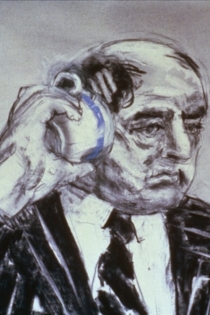
Mine
William Kentridge
A journey into the mines provides a visual representation of a journey into the conscience of Kentridge's invented character, Soho Eckstein, the white South African property owner who exploits the resources of land and black human labour which are under his domain. Throughout the film the imagery shifts between the geological landscape underground inhabited by innumerable black miners and Soho's world of white luxury above ground. When Soho, breakfasting in bed, pushes down the plunger of his cafetière, its movement is transformed into a rapid descent through the tray, through the bed and into the mine-shaft. Here the miners' world of overwhelming misery is depicted in claustrophobic tunnels where they are trapped digging, drilling and sleeping, embedded in rock. Above ground, Soho sits at his desk in his customary pin-stripe suit and punches adding machines and cash registers, creating a flow of gold bars, exhausted miners, blasted landscapes and blocks of uniform housing.
Mine
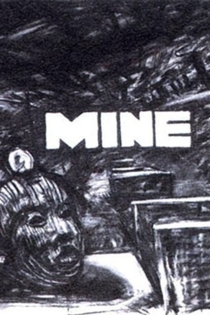
Monument
William Kentridge
William Kentridge’s Monument is a captivating short animated film about the unveiling of a statue dedicated to the South African work force. This monument comes to life, and continues to suffer under the elite white regime. This celebration and memorialization of past injustices fails in its goal to silence or normalize these injustices, as the statue breaks the cinematic third wall and its breathing fills our ears.
Monument
